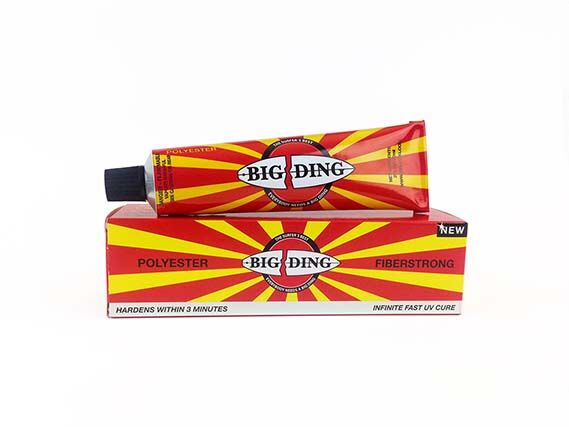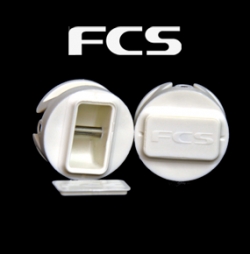Description
UV Cure polyester Fibrestrong is een polyester reparatieset welke bestaat uit 60ml polyester gemixt met stukjes glasvezel, verschillende vellen schuurpapier, een houten spateltje en een stuk plastic folie. De polyester hoeft niet gemengd te worden en hard in 3 minuten uit nadat deze in contact is gekomen met direct zonlicht.
Inhoud reparatie set:
- 60ml polyester gemixt met stukjes glasvezel
- 1x schuurpapier P60
- 1x schuurpapier P80
- 1x schuurpapier P150
- 1x schuurpapier P320
- 1x houten spateltje
- 1x plastic folie
Instructies:
1. Maak de ondergrond schoon, droog en schuur deze op.
2. Werk in de schaduw en gebruik alleen de hoeveelheid polyester uit de tube die je nodig hebt. Doe vervolgens direct de dop weer op de tube.
3. Bedek de reparatie met het plastic folie.
4. Plaats in direct zonlicht tot de reparatie is uitgehard.
5. Verwijder het plastic en schuur de reparatie in de gewenste vorm.
Brand
Big Ding
Big Ding Epoxy & Polyester Surfboard Repair Products
We – Tao and Felix – know each other our whole lives. Back in the days, we began surfing at Munich’s inglorious downtown river wave – “the Eisbach“. As surfboards get frequently crashed at the rough stone walls of this urban surf spot, we had the idea to produce our own surfboard repair kit.
In 2011 we rented a garage, ordered all the material and assembled the first hand-crafted kits. We knew, to be successful the most important thing would be to use the best available quality ingredients and to provide the kits at a fair price. Finally, we packed everything in a screw-lid box and named it
BIG DING.
Today the production is outsourced to German partners including Caritas – a social factory in which handicapped people get jobs for packaging. We are proud to say that our products are not imported from Asia. BIG DING repair products are available in surf shops all over Europe.

Heeft u hulp nodig bij uw aankoop? Neem dan gerust contact met ons op
+3170 201 5153
info@noordzeeboardstore.nl
Contact formulier




